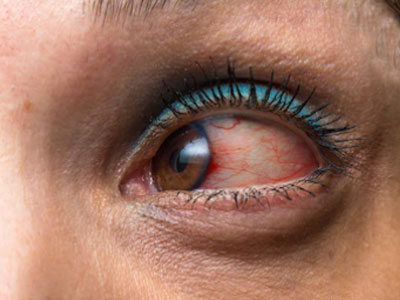Common Eye Disease
No matter how much care you take of your eyes, you will from time to time encounter some kind of eye problems. While some of these problems cause very little harm to the eyes, some may lead to permanent blindness. It is always advisable to consult the doctor.
Uveitis

Uveitis is an inflammation of the uvea (or uveal layer) – the middle layer of three that make up the eye. It may be infectious or noninfectious. It is a treatable condition; if left untreated it can lead to serious eye condition.
What Causes Uveitis?
In many cases, there is no apparent underlying cause for uveitis. It is a condition associated with a wide spectrum of diseases and syndromes, and may also come as a result of the body’s natural response to infection. Other causes include eye injury, eye surgery, autoimmune disorders, inflammatory disorders, or a cancer that affects the eye.
Studies show cigarette smoking increases risk.
Symptoms of Uveitis
Uveitis may come on suddenly with redness and pain, or it may be slow in onset with little pain or redness, but gradual blurring of vision. Symptoms of uveitis may include:
- Light sensitivity
- Blurring of vision
- Pain in the eye
- Redness of the eye
- Floaters in the eye
- Decreased vision
If you experience these symptoms it is important to schedule an exam with your eye care professional immediately.
Treatments for Uveitis
There are several types of uveitis, each affecting different parts of the uvea. When treated promptly, uveitis typically responds well. The first goal is to decrease the inflammation in the eye in a way that balances the potential risk of treatment. Treatments of uveitis may include:
- Prescription eye drops in combination with anti-inflammatory medications. Eye drops may not penetrate well to the back of the eye, so this type of treatment may not work in posterior uveitis.
- Ocular anti-inflammatory injections – injections may be to the outside or inside of the eye. This treatment may be uncomfortable, yet very effective in acute episodes of uveitis.
- Systemic or oral administration of steroids, other immunosuppressant or anti-metabolite drugs.
- Surgical procedures may be needed to replace the vitreous (or gel-like area) or to implant a device in the eye for slow-release of corticosteroid medication
Some medications can have serious side effects. Follow-up exams, including eye exams and possible blood tests, are important and may be needed every 1-3 months. Talk to your eye care professional about any concerns you have.
Hours of Operation
MON – SAT
8:00am – 12:00 noon (By Appointment)
4:00pm – 8:00pm (Walk-In)
SUN
We are closed
Consultation Fees
Rs. 500/-
Stallard Eye Clinic
Drop Us a Line
Don't be shy. Let us know if you have any questions!
